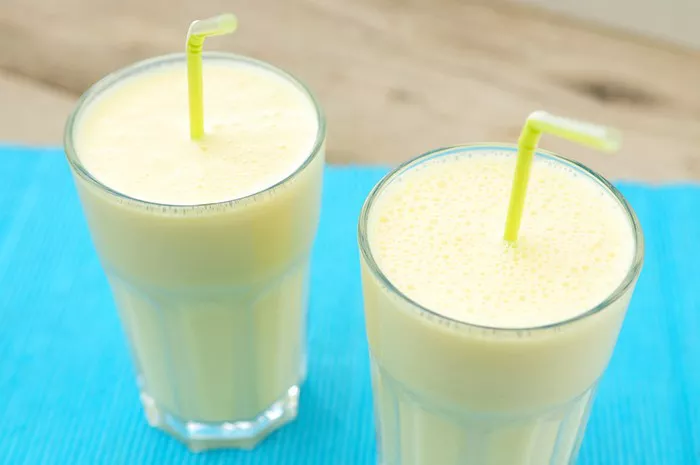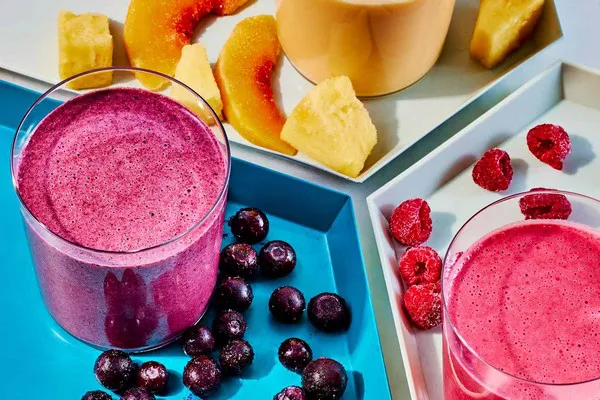Smoothies are a delicious and nutritious way to enjoy fruits and vegetables. They can be a great snack or meal replacement, especially when you want something refreshing. If you’re watching your calorie intake, making a low-calorie fruit smoothie can be a smart choice. In this article, we will explore how to create a tasty low-calorie fruit smoothie, including tips on ingredients, preparation, and variations.
Why Choose a Low-Calorie Smoothie?
Low-calorie smoothies are perfect for those looking to lose weight or maintain a healthy lifestyle. They are often packed with vitamins, minerals, and fiber, which can help keep you full and satisfied. By focusing on low-calorie ingredients, you can enjoy a sweet treat without the guilt.
Essential Ingredients for a Low-Calorie Smoothie
When making a low-calorie fruit smoothie, it’s important to choose the right ingredients. Here are some key components to consider:
Base Liquid
The base liquid is crucial for blending your smoothie. Here are some low-calorie options:
Water: The simplest and lowest calorie option. It keeps your smoothie light and refreshing.
Unsweetened Almond Milk: A great dairy-free alternative. It has fewer calories than regular milk.
Coconut Water: Adds a hint of sweetness and electrolytes. It is low in calories and hydrating.
Green Tea: A unique option that adds antioxidants. Brewed and cooled, it can be a flavorful base.
Fruits
Fruits are the star of your smoothie. They provide natural sweetness and flavor. Here are some low-calorie fruits to consider:
Berries: Strawberries, blueberries, raspberries, and blackberries are all low in calories and high in fiber.
Melons: Watermelon and cantaloupe are hydrating and refreshing. They have a high water content, which helps keep calories low.
Peaches: Fresh or frozen peaches add sweetness and flavor without a lot of calories.
Kiwi: This tropical fruit is rich in vitamin C and adds a unique taste to smoothies.
Vegetables
Adding vegetables can boost the nutritional value of your smoothie without adding many calories. Consider these options:
Spinach: A nutrient-dense green that blends well and has a mild flavor.
Kale: Another leafy green that is rich in vitamins and minerals. It has a slightly stronger taste than spinach.
Cucumber: Adds hydration and a refreshing taste. It is very low in calories.
Avocado: While higher in calories, a small amount can add creaminess and healthy fats.
Thickeners
To give your smoothie a nice texture, you may want to add a thickener. Here are some low-calorie options:
Greek Yogurt: Opt for the non-fat version. It adds creaminess and protein without too many calories.
Chia Seeds: These tiny seeds expand in liquid and can help thicken your smoothie. They are also high in fiber.
Frozen Fruit: Using frozen fruit can create a thicker, creamier texture without adding extra calories.
Sweeteners (Optional)
If you prefer a sweeter smoothie, consider using natural sweeteners. However, be cautious with the amount to keep calories low:
Stevia: A natural, zero-calorie sweetener that can enhance sweetness without adding calories.
Honey or Maple Syrup: Use sparingly, as these are higher in calories. A teaspoon can go a long way.
Step-by-Step Guide to Making a Low-Calorie Fruit Smoothie
Now that you know what ingredients to use, let’s go through the process of making a low-calorie fruit smoothie.
Step 1: Gather Your Ingredients
Start by gathering all your ingredients. Here’s a simple recipe to follow:
- 1 cup of unsweetened almond milk (or your chosen base)
- 1 cup of mixed berries (fresh or frozen)
- 1 small banana (for sweetness and creaminess)
- 1 cup of spinach (optional)
- 1 tablespoon of chia seeds (optional)
- Ice cubes (optional, for a thicker texture)
Step 2: Prepare the Ingredients
If you are using fresh fruits, wash them thoroughly. Cut the banana into slices for easier blending. If you are using frozen fruits, you can skip this step.
Step 3: Blend the Ingredients
In a blender, add the base liquid first. This helps the blades move easily. Next, add the fruits, spinach, and chia seeds. If you want a thicker smoothie, add a few ice cubes.
Step 4: Blend Until Smooth
Blend the mixture on high speed until everything is well combined. You want a smooth and creamy texture. If the smoothie is too thick, add a little more liquid. If it’s too thin, add more fruit or ice.
Step 5: Taste and Adjust
Taste your smoothie. If you want it sweeter, add a little stevia or a small amount of honey. Blend again briefly to mix in any added ingredients.
Step 6: Serve and Enjoy
Pour your smoothie into a glass. You can garnish it with a few whole berries or a sprinkle of chia seeds on top. Enjoy your refreshing low-calorie fruit smoothie!
Tips for Making the Perfect Low-Calorie Smoothie
Here are some additional tips to enhance your smoothie-making experience:
Experiment with Flavors: Don’t be afraid to try different combinations of fruits and vegetables. Each combination can create a unique flavor profile.
Use Seasonal Fruits: Seasonal fruits are often fresher, tastier, and sometimes cheaper. They can enhance the quality of your smoothie.
Prep Ahead: Prepare smoothie packs by portioning out your fruits and vegetables in freezer bags. When you’re ready to make a smoothie, just blend the contents with your chosen liquid.
Stay Hydrated: If you find smoothies too filling, consider having them as a snack rather than a meal replacement.
Common Mistakes to Avoid
To make sure your smoothie turns out great, avoid these common mistakes:
Adding Too Many High-Calorie Ingredients: Be mindful of how much yogurt, nut butter, or sweeteners you add. These can quickly increase the calorie count.
Not Blending Long Enough: Ensure that your smoothie is blended long enough to achieve a smooth texture. Lumpy smoothies can be unappetizing.
Ignoring Portion Sizes: Even healthy ingredients can add up in calories. Keep an eye on portion sizes to maintain a low-calorie count.
Variations to Try
Once you master the basic recipe, try these variations to keep your smoothies exciting:
Tropical Smoothie: Use pineapple, mango, and coconut water for a refreshing tropical twist.
Green Smoothie: Combine spinach, kiwi, banana, and almond milk for a nutrient-packed option.
Chocolate Berry Smoothie: Add a tablespoon of unsweetened cocoa powder to your berry smoothie for a chocolatey flavor without the extra calories.
Conclusion
Making a low-calorie fruit smoothie is simple and rewarding. By selecting the right ingredients and following the steps outlined in this article, you can create a delicious drink that supports your health goals. Smoothies are versatile, allowing for endless combinations and flavors. Enjoy experimenting with different fruits and vegetables, and remember to keep your portions in check. With a bit of creativity, you can enjoy a refreshing and nutritious smoothie that fits perfectly into your low-calorie lifestyle.
Related Topics:


























